
views
Preparing to Measure
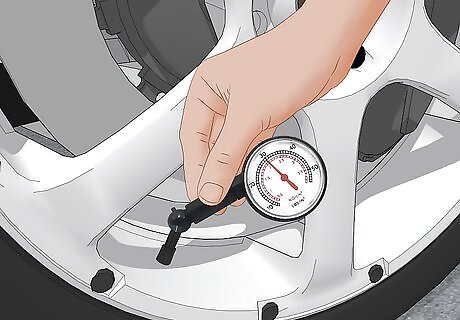
Check your tire pressure. Your tires should be appropriately and evenly inflated before you proceed. Tires that are not properly inflated may actually be the cause of your performance issues, so it's a good idea to check this first. You may not need to do anything else. Additionally, having your tires inflated properly is important for getting accurate reads on the measurements you'll be taking later.
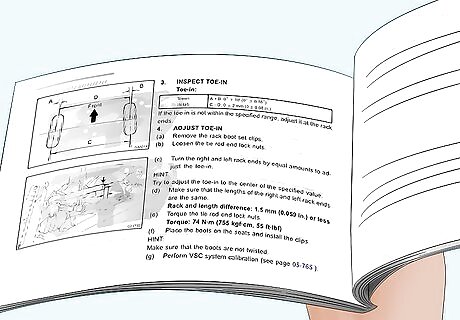
Check your specifications. Look in your car's repair manual for details about the proper alignment settings. You should find numbers describing the car's ideal toe, camber, and possibly caster. Write these numbers down. You may not know what these numbers mean yet, but don't worry, this will be explained in parts 2 and 3. For now, just make sure you transcribe them accurately.

Check the front end suspension. If your suspension is loose or any parts have worn out, this may also be the cause of your problems. Like tire-pressure issues, problems with your suspension can also throw off your measurements, so it's important to take care of any issues here first. Drive the car onto a flat area, jack up the front end, and place the car on jack stands. Make sure the steering wheel is unlocked. The easiest way to check the suspension once the car is lifted is to grip each wheel and shake it, both horizontally and vertically. If you don't feel much movement, your suspension is probably in good shape. If not, this may be the source of your problem. If the suspension is loose, you must replace any worn parts. This could include bad ball joints, rack, bushings, gear boxes, tie rod ends, or steering pads. Unless you have experience doing suspension work, you will probably need to take your car to a professional mechanic.
Measuring Your Toe

Determine the proper toe. Toe is the amount by which the wheels are closer (toe-in) or further apart (toe-out) at their front edges than at their rear edges, as viewed from above. Depending on your car, your manual will probably recommend either zero toe (equal distance between the front and back) or slight toe-in, which increases stability. Toe is the source of most alignment problems, and the easiest to correct yourself.
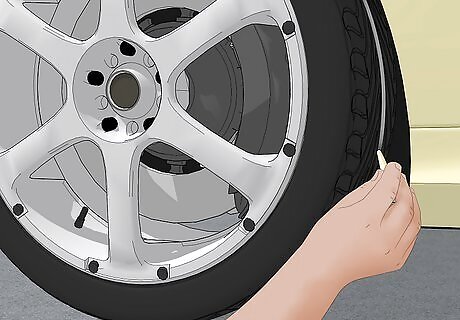
Draw a line. With the car still up on the jack, hold a pocketknife, thin piece of chalk, or white pencil against the center of tire tread. Hold your hand very still and have an assistant turn the tire one full turn, creating a line around the circumference. Do the same on the other side. If there is no area on the tire where the tread is flat, you may need to suspend your marking tool with a clamp or similar stabilizer.
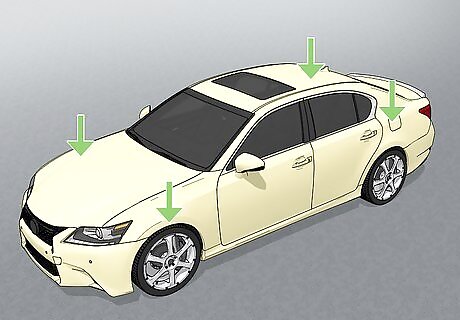
Lower the car. After you lower the car to the ground, push down on the car above each wheel a few times to allow the car to settle.
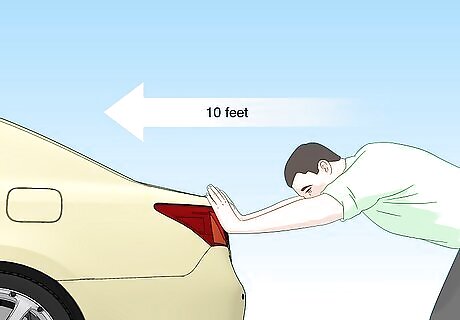
Roll the car. Push the car forward at least 10 feet with the steering wheel unlocked to make sure the wheels are straight.
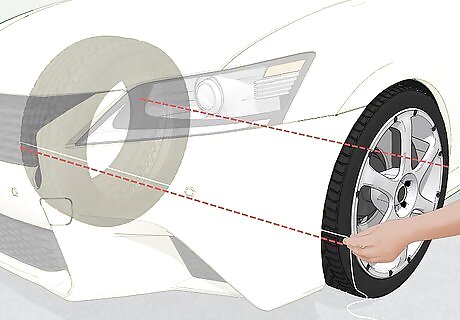
Stretch a string. With an assistant, take a piece of string or wire and stretch it between the lines on the front of the tires, even with the spindle, and measure the distance on the string. Repeat at the process at the back of each tire. As long as you use string or wire that does not stretch, you can get a very accurate measurement this way.
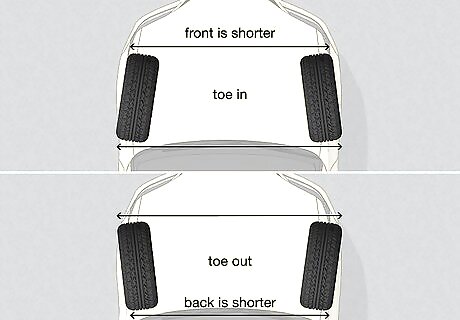
Subtract the differences. If the distance in the front is smaller than in the back, your wheels toe-in. If the measurement in the back is smaller, they toe-out. If they are identical, you have zero toe. Rear toe is also important for control and tire life. It is also important to have your front and rear wheels aligned with one another (e.g. parallel). You can measure your rear toe similarly to the front. If your rear toe is out of alignment, you may need to see a professional mechanic. Rear toe should be adjusted before front toe, so if you find a problem with the rear, don't waste time adjusting the front yourself.
Measuring Your Camber
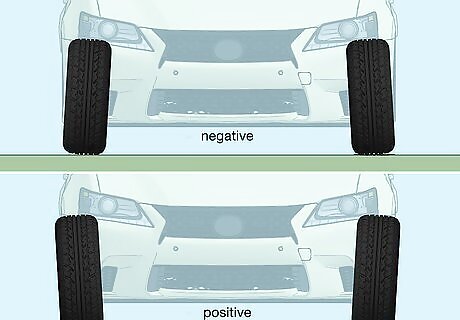
Determine the right camber. Camber is the vertical angle of the wheels when looking at the car head on. Wheels that are closer together at the top are considered to have "negative" camber, those closer together at the bottom have "positive" camber.Depending on your car, the manual will probably recommend slight negative camber, as this increases stability.
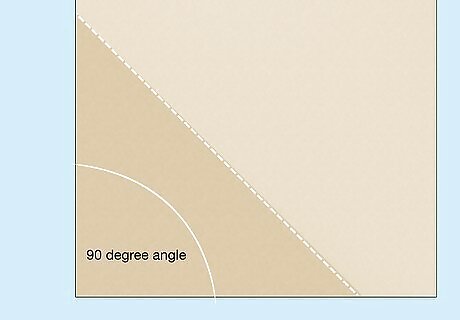
Cut a measuring triangle. Get a piece of stiff cardboard or wood and cut it into a perfect right triangle (one with a 90 degree angle) that is the same height as your wheels.

Place the triangle. Starting in the front of the car, put the base of the triangle on the ground, perpendicular to the car, and the other side of the 90 degree angle against the center of one of the wheels.
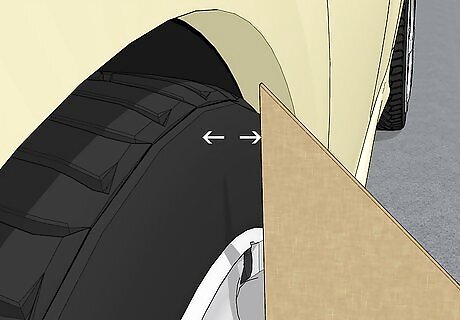
Take your measurement. There will be a gap between your measuring device and your tire, probably at the top. Measure this with a ruler or calipers. This is your camber. Repeat with the other front wheel. The two wheels should be about the same and within the range specified by your manual. If not, your camber may need alignment. Repeat the process in the back. If you think the camber is off, move your car forward or backward enough to spin the tires half a turn, then try measuring again. Problems with camber, front or rear, can affect how your car handles.. At the same time, however, unless your car has been in a serious accident, it is unlikely that your camber will be seriously out of alignment. If your camber does need to be corrected, it should be done before adjusting the toe. Camber cannot typically be corrected at home with ordinary tools, and indeed, for some cars it cannot be adjusted at all without bending or replacing major parts. Unless you have experience with automotive repair and professional tools, do not try to adjust this yourself.
Correcting Your Toe
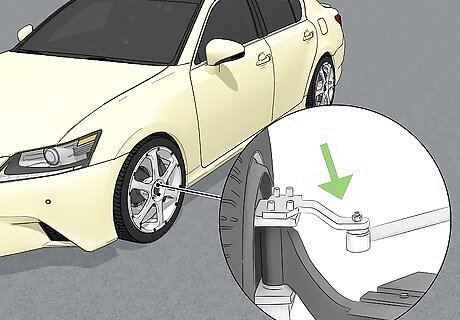
Locate your tie rod ends. The tie rods are the connection between your steering system and your wheels. The rod ends are L-shaped parts sometimes found near the inside of the wheel. It's a good idea to look at your car's manual and/or at some pictures on the internet to get a sense of what tie rod ends look like and where exactly they are located on your specific car.

Loosen the lock nuts. Between the tie rod and each tie rod end is a nut that holds it in place. You'll need to loosen this nut with a wrench. Be aware that on some vehicles, the driver's side lock nut may be threaded counterclockwise, while the passenger side is threaded clockwise. Depending on your steering system, there may also be a clamp that needs to be removed at each end to make sure the bellows boot is not sticking to the inner tie rod. Consult your manual for details. If it has been a long time since you had an alignment, the threaded parts may be stubborn and require some lubrication, such as WD40, in order to make them turn.

Make your adjustments. Depending on the type of steering you have, there are two different ways you can adjust your toe. If you have rack and pinion steering, you should turn the inner tie rod itself. Spinning the rod will adjust the toe in or out. If you have a parallelogram linkage system, there will be adjusting sleeves that you can turn to adjust your toe. These sleeves can be damaged by this process, so be careful. There are special tools for rotating tie rods which can prevent damage. Whichever system you have, make sure to keep in mind that the change you are making to the toe will be distributed across two wheels. Each tie rod should be adjusted 1/2 of the total desired amount of change in or out.
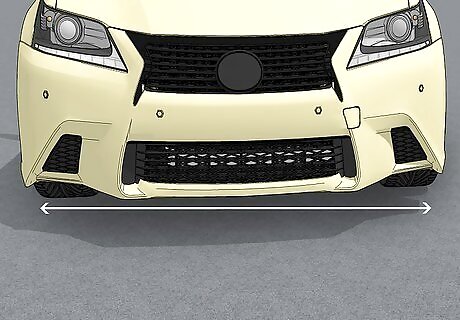
Re-check the toe. Tighten your nuts (and clamps, if applicable) back up. Then, recheck the toe using the same procedures you followed in part 2. Readjust as necessary. Unless you are well practiced at this, there may be a certain amount of trial and error to get this right.

Test drive the car. Take the car for a drive to verify that any obvious alignment issues have been corrected (e.g. that the car does not pull to one side or vibrate excessively). If your alignment problems persist, you may have a problem that requires a professional mechanic.


















Comments
0 comment